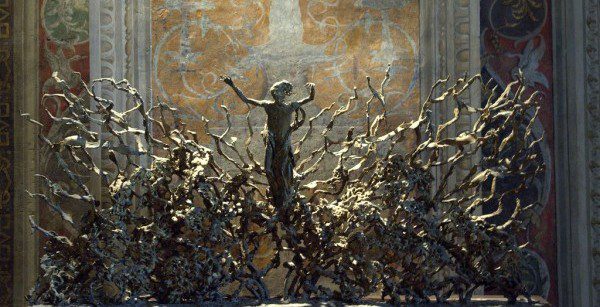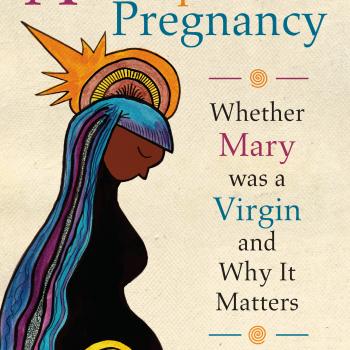The resurrection revealed that Jesus of Nazareth was the divine Son of God.

Wolfhart Pannenberg develops this thought in his now classic text Jesus — God and Man. His approach stands as a prominent example of a “Christology from below,” as opposed to a “Christology from above,” because he begins reflection on Jesus from the concrete, particular, historical life of Jesus—who in that life shows himself over time to be not just Jesus the carpenter but also he divine Son of God. The “eternal Son” and the “man Jesus” are “two different aspects of the one Jesus Christ” (155).
But as a true human being, Jesus’ identity as divine Son of God wasn’t known to him from the beginning of his life. Rather, it developed over time as he developed in his humanity. And again, it wasn’t until his resurrection from the dead that the fullness of his identity became known. In the resurrection God confirmed that Jesus was chosen and was/is the divine pre-existent Son, the Logos with God from all eternity.
There’s a lot to like about Pannenberg’s articulation of the unity of divinity and humanity in Jesus, in large part because it preserves the true humanity of Jesus while also affirming that Jesus was not just human but was also “one with God.” But he doesn’t rely on a traditional synthesis of “two natures” to maintain the unity of God and man in Jesus.
While being fully human, Jesus was also the Lord, the Kyrios, and the Word, the Logos. He revealed the essence of God to the world in the form of complete, genuine humanity, but his unique relationship to God and the Spirit was unveiled finally in the resurrection.
For Pannenberg, the reality and “intention” of the incarnation, that the Son of God became a man in Jesus Christ, is only really made known “retroactively” through the resurrection. Here’s how he puts it:
However, the truth of such an assertion is dependent upon the temporal actuality of that thing, thus in this case the incarnation. What is true in God’s eternity is decided with retroactive validity only from the perspective of Jesus’ resurrection for the whole of Jesus’ human existence on the one hand (as we have already seen) and thus also for God’s eternity, on the other. Apart from Jesus’ resurrection, it would not be true that from the very beginning of his earthly way God was one with this man. That is true from all eternity because of Jesus’ resurrection. Until his resurrection, Jesus’ unity with God was hidden not only to other men but above all, which emerges from a critical examination of the tradition, for Jesus himself also. It was hidden because the ultimate decision about it had not been given (321)
And then,
The confirmation of Jesus’ unity with God in the retroactive power of his resurrection makes the hiddenness of this unity during Jesus’ earthly life comprehensible and thus makes room for the genuine humanity of this life… (322)
And the conclusion of the matter:
If these considerations lead us in the right direction, the concept of the incarnation can be paraphrased in terms such as these: out of his eternity, God has through the resurrection of Jesus, which was always present to his eternity, entered into a unity with this one man which was at first hidden. This unity illuminated Jesus’ life in advance, but its basis and reality were revealed only by his resurrection (322).
I would add to this reflection on Jesus that the resurrection was and remains the ground of hope for the promise that our humanity is not finished, either. We anticipate a resurrection and a glorification of our bodies, too. By God’s grace we will be brothers and sisters of Christ as adopted children of God.











